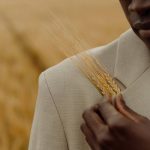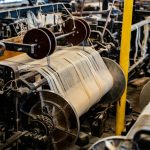You’ll find jute erosion control fabric to be a natural, biodegradable solution that stabilizes soil and prevents erosion on slopes and garden beds. It retains moisture, supports plant growth, and encourages beneficial insects, making your landscaping healthier and more vibrant. Jute is lightweight, easy to install, and breaks down naturally, enriching the soil without harmful residue. By exploring its uses and benefits, you’ll discover how it can transform your landscaping sustainably and effectively.
Table of Contents
Key Takeaways
- Jute erosion control fabric is a natural, biodegradable mesh that stabilizes soil and prevents erosion on slopes and landscaped areas.
- It retains soil moisture, protects seeds, and supports beneficial insects, enhancing plant growth and biodiversity.
- Compared to synthetic mats, jute is eco-friendly, affordable, lightweight, and promotes better water infiltration.
- Proper installation involves clearing debris, overlapping fabric edges, securing with stakes, and covering with soil or mulch.
- Jute fabric supports sustainable landscaping by preventing soil loss, enriching soil health, and reducing environmental pollution.
What Is Jute Erosion Control Fabric?
Jute erosion control fabric is a natural material designed to prevent soil erosion on slopes and landscaped areas. When you use it, you’re applying a biodegradable mesh made from jute fibers derived from the jute plant.
Jute erosion control fabric is a natural, biodegradable mesh crafted from jute fibers to prevent soil erosion.
This fabric acts as a protective layer over the soil, holding it in place against wind and water runoff. You’ll find it lightweight and flexible, making installation straightforward even on uneven terrain.
As you secure it, the fabric allows water and air to pass through, promoting healthy plant growth beneath. Over time, the jute breaks down naturally, enriching the soil without leaving harmful residues.
Choosing this fabric means you’re working with an eco-friendly option that supports sustainable landscaping practices.
Key Benefits of Using Jute Fabric for Soil Stabilization
When you need a reliable way to stabilize soil, using jute fabric offers several advantages. It’s a natural, biodegradable option that protects your landscape without harming the environment.
You’ll find it easy to handle and install, making your project smoother and faster. Plus, jute fabric effectively reduces soil erosion by holding soil in place during heavy rains or strong winds. Choosing jute means you’re investing in a sustainable solution that supports long-term soil health.
- Protects soil from erosion naturally
- Breaks down harmlessly, leaving no waste
- Easy to lay out and secure
- Provides immediate soil stabilization
- Supports your commitment to eco-friendly landscaping
With jute, you’re making a smart, responsible choice for your soil’s future.
How Jute Fabric Supports Plant Growth and Biodiversity
You’ll find that jute fabric helps keep soil moist, creating a perfect spot for seeds to sprout and grow strong.
It also provides a safe habitat for beneficial insects that boost your garden’s health.
Natural Soil Moisture Retention
Soil moisture plays an essential role in nurturing healthy plants and sustaining diverse ecosystems. When you use jute erosion control fabric, you help the soil retain water naturally, creating an ideal environment for roots to thrive.
This moisture retention reduces the need for frequent watering, saving you time and resources. Jute’s porous texture allows water to seep through gradually, preventing runoff and erosion while maintaining consistent hydration.
By choosing jute fabric, you support:
- Stronger, deeper root systems
- Enhanced seed germination rates
- Reduced soil temperature fluctuations
- Improved microbial activity
- A healthier, more vibrant landscape
With jute, you’re not just controlling erosion—you’re fostering a thriving, self-sustaining ecosystem right in your garden.
Habitat for Beneficial Insects
Jute erosion control fabric doesn’t just help retain moisture—it also creates a welcoming habitat for beneficial insects that boost plant growth and biodiversity.
When you lay jute fabric over soil, you provide a natural refuge for pollinators like bees and butterflies, as well as predators such as ladybugs and ground beetles. These insects help control pests and enhance pollination, which supports healthier, more vigorous plants.
The breathable, biodegradable texture of jute encourages insects to thrive without disrupting the soil ecosystem. By choosing jute, you’re fostering a balanced environment where beneficial insects can flourish, ultimately improving your garden’s resilience and productivity.
This natural support system reduces your need for chemical interventions, making your landscaping efforts more sustainable and eco-friendly.
Enhanced Seed Germination Environment
Although seed germination can be a delicate process, using jute erosion control fabric creates an ideal environment that boosts success rates.
You’ll find that jute gently holds seeds in place, protecting them from wind and water erosion. Its natural fibers retain moisture, ensuring seeds stay hydrated without becoming waterlogged.
Plus, jute allows air to circulate, preventing mold and encouraging healthy root development. By choosing jute, you’re supporting biodiversity—plants thrive, attracting pollinators and beneficial insects.
With jute fabric, you get:
- Consistent moisture retention for steady seed growth
- Protection from harsh weather and soil displacement
- Improved soil temperature regulation
- Natural biodegradability that enriches the soil
- A safer habitat encouraging diverse plant life and wildlife
You’re giving your landscape the best start possible.
Comparing Jute Fabric to Other Erosion Control Materials
When you’re choosing erosion control materials, it’s important to weigh the benefits of jute fabric against other options like synthetic mats or coir.
Jute stands out for its natural biodegradability, allowing it to break down without harming the environment, unlike many synthetic mats that persist for years. It’s also lightweight and breathable, promoting better water infiltration and root growth.
Jute’s natural biodegradability and breathability enhance water flow and root development without lasting environmental impact.
Compared to coir, jute is generally more affordable and easier to handle, though coir may last longer under harsh conditions.
Synthetic mats often offer greater durability but lack the eco-friendly benefits of natural fibers.
If you want a sustainable, cost-effective solution that supports plant establishment and soil health, jute fabric is a strong contender.
Your choice ultimately depends on your project’s budget, lifespan needs, and environmental priorities.
Step-by-Step Guide to Installing Jute Erosion Control Fabric
Installing erosion control fabric involves a few straightforward steps that you can easily follow to protect your landscape from soil loss.
Start by clearing the area of debris and leveling the soil to guarantee the fabric lies flat. Then, roll out the jute fabric over the slope or bare soil, making sure it overlaps at the edges for full coverage.
Secure the fabric using stakes or pins, pressing them firmly into the ground to prevent shifting. Finally, cover the fabric with a thin layer of soil or mulch to anchor it and encourage vegetation growth.
- Feel the satisfaction of protecting your garden effortlessly
- Watch soil stay put even during heavy rains
- Enjoy a greener, healthier landscape blossoming beneath
- Gain confidence in your DIY landscaping skills
- Experience peace knowing you’re preventing costly erosion
Best Practices for Maintaining Jute Fabric in Your Landscape
Once your jute erosion control fabric is in place, keeping it in good condition guarantees it continues to protect your landscape effectively. Regular checks help you spot damage early, while removing debris prevents fabric deterioration. Avoid heavy foot traffic on the fabric to maintain its integrity. Water your plants gently to avoid washing away the soil beneath the jute.
| Maintenance Task | Recommended Action |
|---|---|
| Inspection | Check bi-weekly for tears |
| Debris Removal | Clear leaves and sticks |
| Traffic Control | Restrict heavy foot traffic |
| Watering | Use gentle, low-pressure spray |
Following these simple steps assures your jute fabric lasts through the seasons, supporting healthy vegetation growth and effective erosion control.
Ideal Landscaping Projects for Jute Erosion Control Fabric
Although jute erosion control fabric works well in many settings, it’s especially suited for projects where natural soil stabilization and plant growth are priorities.
Jute erosion control fabric excels where natural soil stability and thriving plant growth are the top priorities.
You’ll find it perfect for enhancing your landscape while protecting soil from erosion. Whether you’re tackling slopes or restoring natural habitats, jute helps your plants thrive by holding soil gently yet firmly.
Consider using jute fabric for:
- Steep hillside stabilization that prevents washouts
- Riverbank restoration to safeguard delicate ecosystems
- New garden beds where young plants need extra support
- Pathway edges to keep soil in place and reduce maintenance
- Wildflower meadow establishment for natural, beautiful growth
With jute, you can create landscapes that are both strong and sustainable, encouraging vibrant greenery while protecting the earth beneath.
Environmental Impact and Sustainability of Jute Fabric
Because jute fabric is made from natural plant fibers, it offers a highly sustainable option for erosion control that you can feel good about using.
It’s biodegradable, which means it breaks down naturally without leaving harmful residues in the soil. This reduces waste and environmental pollution compared to synthetic alternatives.
Jute cultivation also requires fewer pesticides and fertilizers, making it an eco-friendly crop that supports biodiversity.
When you choose jute, you’re supporting renewable resources and reducing your carbon footprint.
Plus, its decomposition enriches the soil, promoting healthier plant growth.
Tips for Combining Jute Fabric With Other Erosion Control Methods
Using jute fabric in your landscaping not only supports sustainability but also works best when combined with other erosion control methods.
To maximize effectiveness, you want to integrate jute with natural and structural solutions that complement its biodegradable nature.
Here are some tips to help you blend jute fabric with other techniques seamlessly:
- Pair jute with native plants to anchor soil and enhance growth.
- Use contour trenches alongside jute to slow water runoff effectively.
- Combine with mulch layers to retain moisture and protect roots.
- Install check dams in channels to reduce erosion velocity.
- Reinforce steep slopes with biodegradable stakes holding jute in place.
Frequently Asked Questions
Can Jute Erosion Control Fabric Be Used on Steep Slopes?
You can definitely use jute erosion control fabric on steep slopes. It helps stabilize soil and prevents erosion effectively. Just make sure to secure it well and combine it with proper planting for the best results.
How Long Does Jute Erosion Control Fabric Typically Last Outdoors?
You’ll find jute erosion control fabric lasts about 12 to 24 months outdoors. It naturally degrades, so it’s perfect for temporary erosion control while plants establish themselves on your slopes or garden beds.
Is Jute Fabric Safe for Use Around Pets and Wildlife?
You might wonder if jute fabric poses risks to pets and wildlife. It doesn’t—jute is natural, biodegradable, and non-toxic, so you can use it safely around animals without worrying about harmful chemicals or lasting environmental impact.
Can Jute Erosion Control Fabric Be Painted or Dyed?
You can paint or dye jute erosion control fabric, but keep in mind natural fibers absorb colors unevenly. Use water-based, eco-friendly dyes or paints to avoid harming the environment and maintain fabric’s biodegradable properties.
What Tools Are Best for Cutting Jute Erosion Control Fabric?
Think of scissors or a utility knife as your trusty swords, slicing through jute’s woven armor with ease. Sharp blades guarantee clean cuts, making your landscaping project a seamless dance between nature and craftsmanship.
- Nonwoven Fabrics in the Automotive Industry: Sound and Heat Insulation - July 12, 2025
- How Is Color Added to Nonwoven Polypropylene? - July 12, 2025
- A Buyer’s Guide to Nonwoven Fabric Rolls - July 12, 2025







